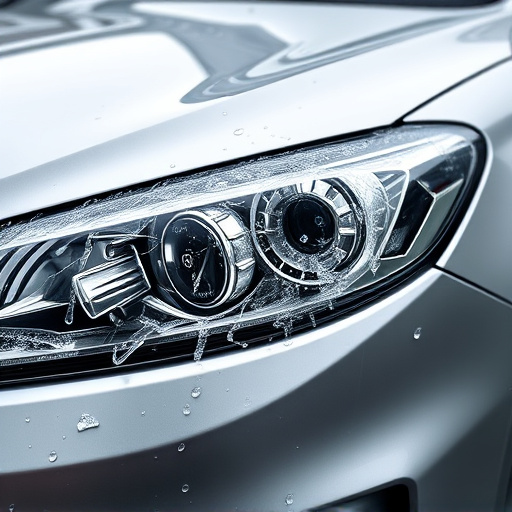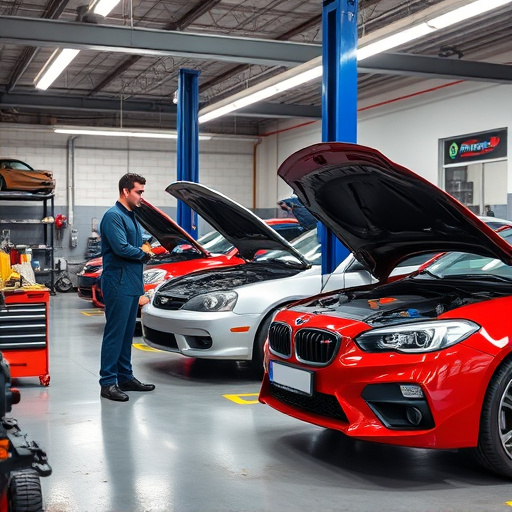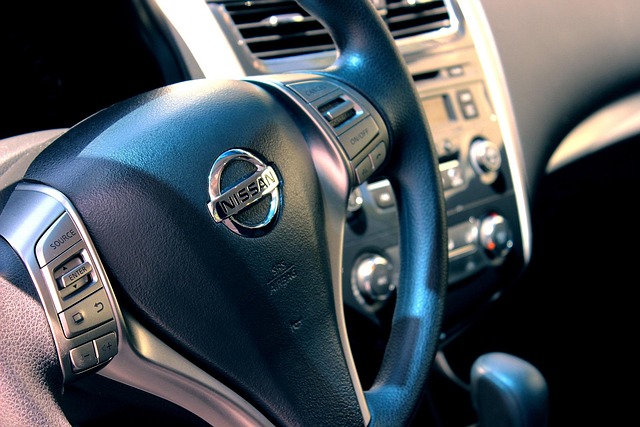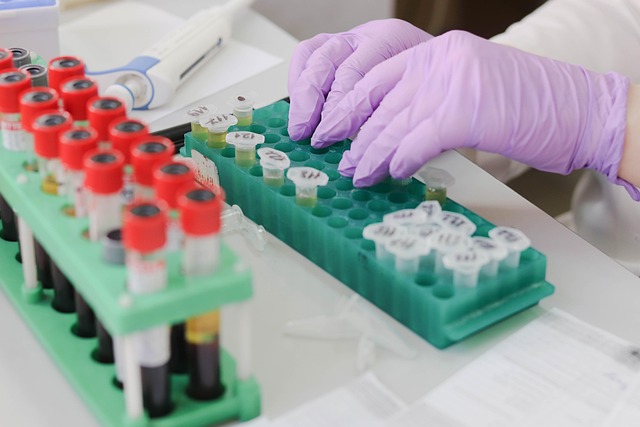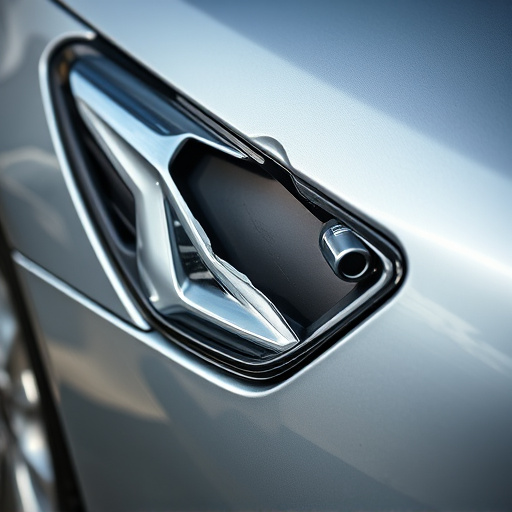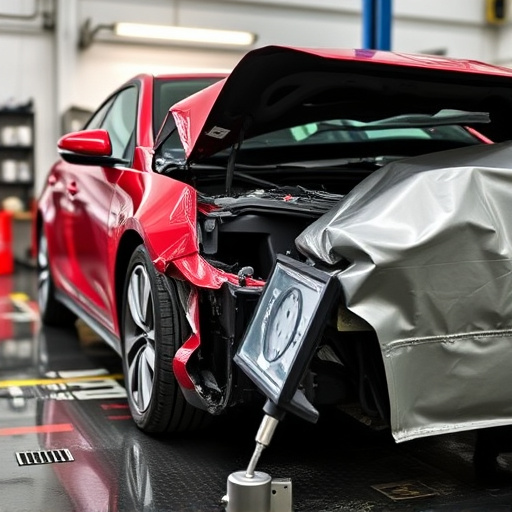Climate conditions, especially temperature and humidity, play a pivotal role in the success of automotive refinishing. Optimal results require balancing these factors: high temps speed up curing but can cause defects, while high humidity slows evaporation for even drying. Technicians must manage environmental factors carefully, particularly in moist regions, to achieve perfect finishes for various tasks, from simple dent repairs to extensive collision damage, ensuring superior aesthetics and durability.
“Unveiling the intricate dance between climate conditions and automotive refinishing, this article delves into the science behind achieving flawless finishes. From the moment paint meets canvas, environmental factors like temperature and humidity play a pivotal role in drying and curing processes. We explore optimal conditions for exceptional results, while navigating challenges posed by hot and humid climates.
Additionally, we dissect the impact of air quality, UV radiation, and regional climatic variations, offering case studies and best practices to ensure automotive refinishing excellence globally.”
- The Impact of Temperature and Humidity
- – How temperature affects paint drying and curing processes
- – Optimal humidity levels for best refinishing results
The Impact of Temperature and Humidity
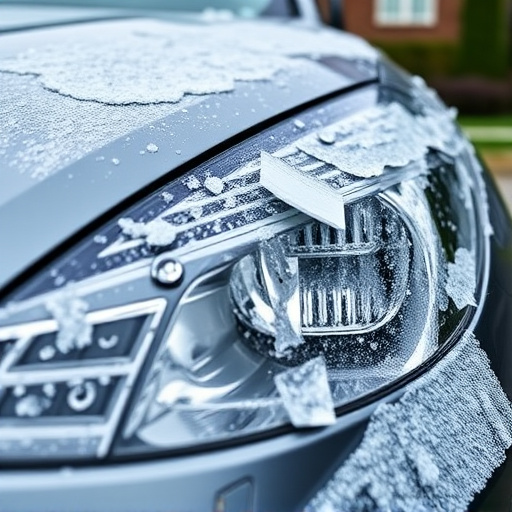
The climate conditions play a pivotal role in determining the outcome of automotive refinishing processes. Among various factors, temperature and humidity are especially influential. Optimal results in car body repair and vehicle dent repair depend greatly on maintaining suitable levels of both. High temperatures accelerate curing and drying times for paints and coatings, ensuring a smoother finish faster. However, extreme heat can lead to uneven drying, causing bubbles or cracks in the final layer, particularly in complex vehicle collision repair scenarios.
On the other hand, high humidity can hinder the evaporation of solvents from the paint, prolonging the drying process and increasing the risk of defects like smearing or lapping. This is particularly problematic in regions with vibrant, bustling environments where vehicles are exposed to moist air year-round. Thus, for successful automotive refinishing, whether it’s a simple vehicle dent repair or comprehensive collision repair, technicians must carefully consider and control temperature and humidity levels throughout the process.
– How temperature affects paint drying and curing processes

Temperature plays a significant role in the success of automotive refinishing projects. In optimal conditions, paint drying and curing happen swiftly, leading to high-quality finishes. Warmer temperatures accelerate the chemical reactions necessary for solidifying the paint, resulting in faster drying times. This is particularly beneficial for auto body shops aiming to turn around repairs efficiently, especially when dealing with luxury vehicle repair cases that require precision and swiftness.
However, extreme heat can be detrimental. Prolonged exposure to high temperatures during the curing process may cause the paint to become brittle or distort its shape, leading to imperfections in the final finish. Conversely, colder temperatures slow down the reaction rate, extending drying times and potentially affecting the work schedule of an auto body shop, including tasks like auto glass replacement if weather conditions dictate indoor work. Understanding these temperature-related nuances is crucial for achieving consistent and exceptional results in automotive refinishing.
– Optimal humidity levels for best refinishing results
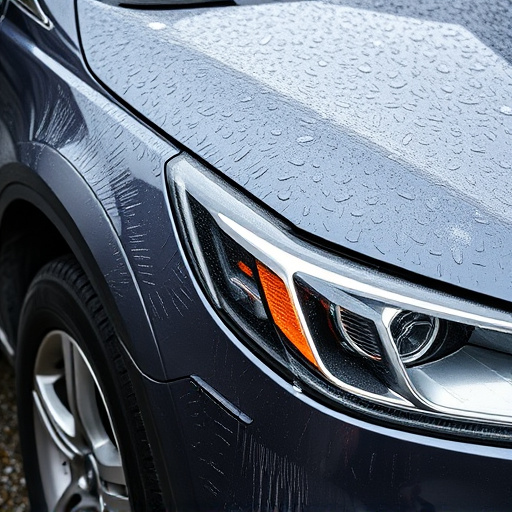
Maintaining optimal humidity levels is key to achieving superior results in automotive refinishing. For paint to dry and cure properly, it requires a balanced environment with specific moisture conditions. Too much humidity can lead to water spots and poor surface quality, while too little can cause the paint to crack or yellow prematurely. Ideally, technicians aim for relative humidity levels between 40% and 60% during the refinishing process, ensuring a controlled atmosphere that promotes even drying.
This meticulous control is especially crucial in cases of vehicle collision repair, scratch repair, or paintless dent repair, where precision and quality are paramount. Achieving the right humidity not only enhances the aesthetics but also ensures long-lasting durability, preventing issues that could arise from improper refinishing conditions.
Climate conditions play a pivotal role in achieving optimal outcomes during automotive refinishing. Understanding how temperature influences paint drying and curing, alongside maintaining specific humidity levels, is essential for professionals in this field. By considering these environmental factors, automotive refinishers can ensure superior finishing results, enhancing the overall quality and longevity of vehicle repairs. This knowledge enables them to deliver top-notch services that meet and exceed customer expectations.

